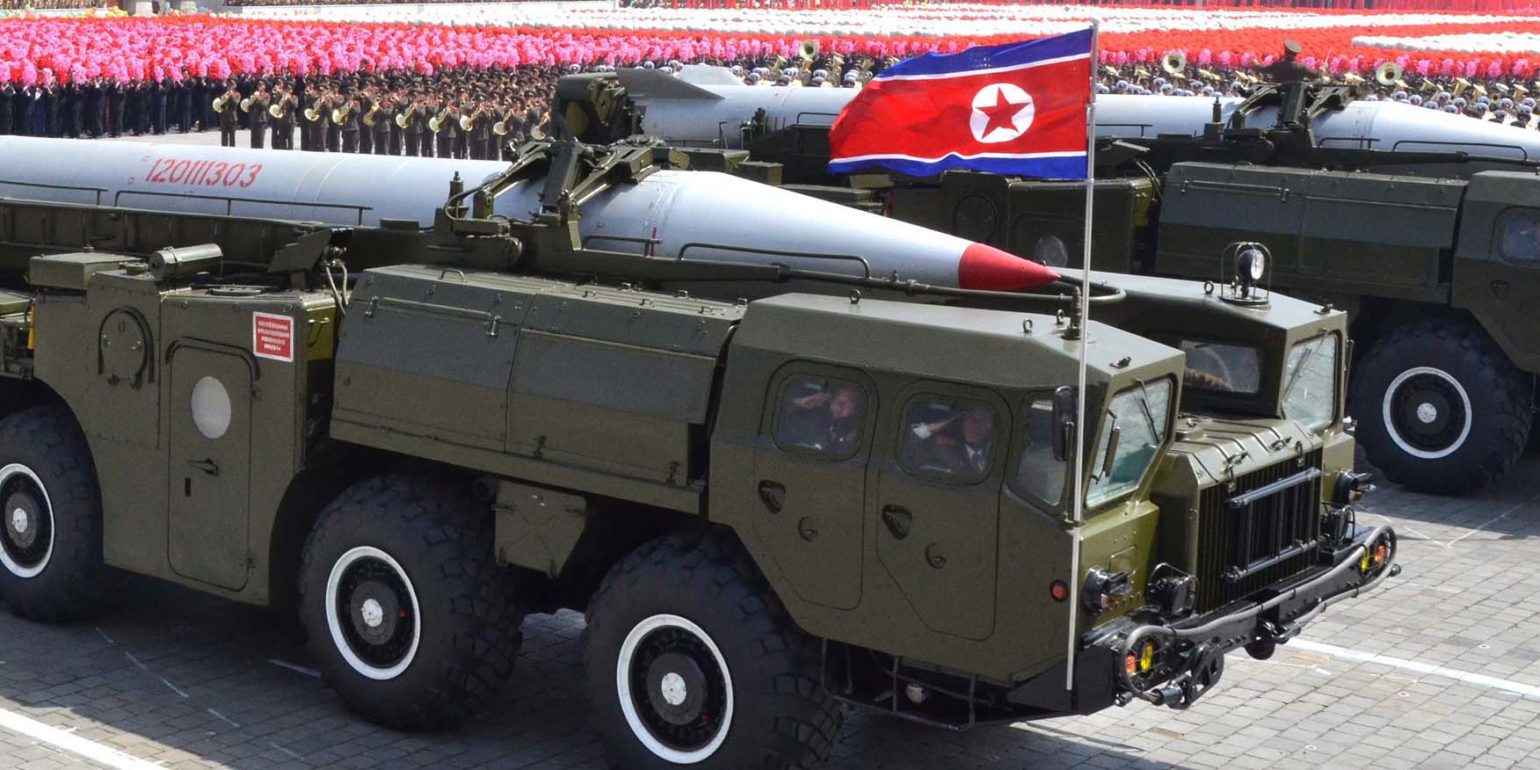Facts
| North Korean/U.S. Designation | Hwasong-9/Scud Extended Range (Scud D variant) |
| Missile Variants | Scud-D (Russia), Hwasong-5, Hwasong-6 |
| Mobility and Role | Road mobile/Surface to surface Medium-Range Ballistic Missile |
| Designer/Producer | North Korea |
| Range | 700-995km |
| Warhead Type and Weight | Conventional or Nuclear/500kg |
| MIRV and Yield | No MIRV capability / N/A |
| Guidance System/Accuracy | Inertial with digital scene matching/50m CEP |
| Stages/Propellant | Single/Liquid |
| IOC | 1994 |
| Status/Number of Units | N/A |
Development
The Hwasong-9, also known as the Scud-Extended Range (ER), or Scud-D, is a medium-range ballistic missile. It is a Scud variant developed in North Korea. [1] The missile has a speculated range from 700-995 km. [2] The Scud-ER is liquid fueled and has a payload of around 500 Kg. [3] This system can be loaded with a chemical or high explosive warhead. It may also be capable of delivering a miniaturized nuclear warhead.[4] Like many other North Korean missile systems, the SCUD-ER is road mobile, and can be launched from almost any location. [5] Furthermore, SCUD-ER was developed indigenously by North Korea based off of its Hwasong-6 Scud-C variant. [6] The Hwasong-9 development started in the early 1990s and production began by 1994. [8]These reports were confirmed in the summer of 2009 when South Korean news agencies reported the launch of three Scud-ER missiles. [9] In addition to using the Scud-ER in their military, North Korea has reportedly exported the system to Syria. [10] Reports suggest that Syria has been in possession of the Hwasong-9 since 2000, while converting its own production of Hwasong-6 to create the longer ranged Hwasong-9. [11] However, this particular weapon system appears to not have been put into mass production. [12] It is unknown if the Hwasong-9 has been supplanted by newer MRBMs. [13]
Strategic Implications
The range on the Scud-ER would allow the North Korean military to strike effectively anywhere on the peninsula at very little notice. Its mobility increases the missile’s resiliency to preemptive counter-force strikes. Likely targets include Seoul and U.S. and ROK military installations. [14] In addition, at its maximum range, the Scud-ER could strike Japan, Russia, and even China. [15] The proliferation of this missile system is also a concern. By selling the technology to Syria, it has increased that country’s strike range, allowing it to strike most of Israel and Southeastern Turkey.
[1] Markus Schiller, “Characterizing the North Korean Nuclear Missile Threat,” 2012, accessed June 11, 2014,http://www.rand.org/content/dam/rand/pubs/technical_reports/2012/RAND_TR1268.pdf.
[2] “Ballistic and Cruise Missile Threat,” Air Force ISR Agency, 2013, accessed June 11, 2014,http://www.afisr.af.mil/news/story.asp?id=123355694.
[3] “Cns Special Report On North Korean Ballistic Missile Capabilities,” Center for Nonproliferation Studies Monterey Institute of International Studies, March 22, 2006, accessed June 11, 2014, http://cns.miis.edu/stories/pdfs/060321.pdf .
[4] Ibid.
[5] “Ballistic and Cruise Missile Threat,” Air Force ISR Agency, 2013, accessed June 11, 2014,http://www.afisr.af.mil/news/story.asp?id=123355694.
[6] Markus Schiller, “Characterizing the North Korean Nuclear Missile Threat,” 2012, accessed June 11, 2014,http://www.rand.org/content/dam/rand/pubs/technical_reports/2012/RAND_TR1268.pdf.
[8] “No-Dong 1 North,” Federation of American Scientists, accessed June 11, 2014,http://www.fas.org/nuke/guide/dprk/missile/nd-1.htm.
[9] “Report: N. Korea Fired Improved Scud Missile,” Fox News, July 05, 2009, accessed June 11, 2014,http://www.foxnews.com/story/2009/07/05/report-n-korea-fired-improved-scud-missile/.
[10] Markus Schiller, “Characterizing the North Korean Nuclear Missile Threat,” 2012, accessed June 11, 2014,http://www.rand.org/content/dam/rand/pubs/technical_reports/2012/RAND_TR1268.pdf.
[11] Markus Schiller, “Characterizing the North Korean Nuclear Missile Threat,” 2012, accessed June 11, 2014,http://www.rand.org/content/dam/rand/pubs/technical_reports/2012/RAND_TR1268.pdf.
[12] “Cns Special Report On North Korean Ballistic Missile Capabilities,” Center for Nonproliferation Studies Monterey Institute of International Studies, March 22, 2006, accessed June 11, 2014, http://cns.miis.edu/stories/pdfs/060321.pdf .
[13] “Implications of the Second Launch of North Korea’s Second “Hypersonic” Missile,” 38North, January 18, 2022, accessed March 3, 2023.
[14] Cns Special Report On North Korean Ballistic Missile Capabilities.”
[14] Ibid

